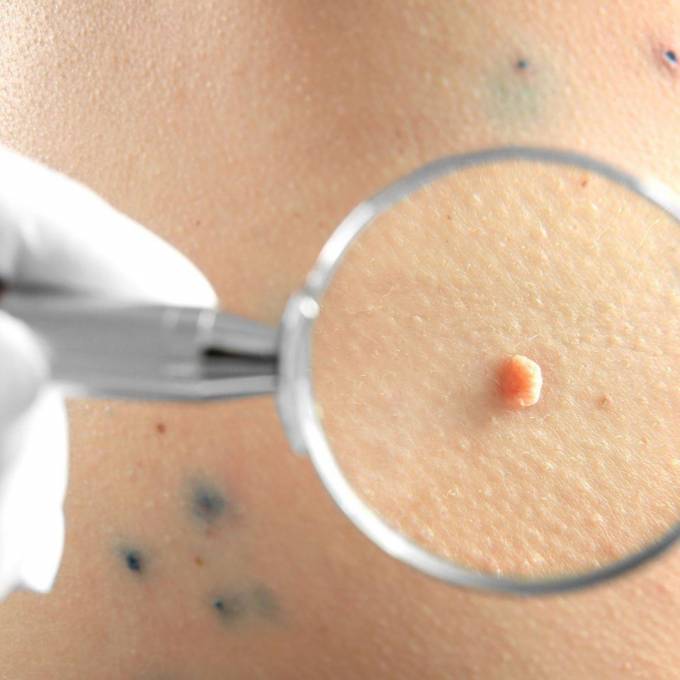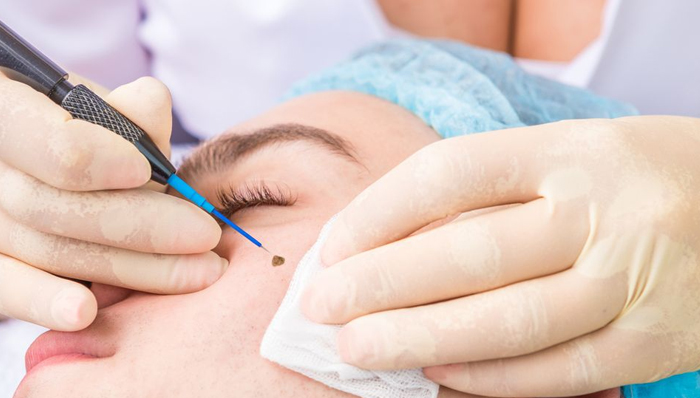How to Choose the Right Method for Mole Removal?
Published By Dynamic Clinic, 23 Nov 2024

Moles are common skin growths that can appear anywhere on the body. While most moles are harmless, some individuals choose to have them removed for cosmetic or medical reasons. With advancements in dermatological procedures, several methods are available for mole removal. Selecting the right method depends on factors such as the type of mole, its location, and individual preferences.
Understanding the various Mole Removal in Dubai techniques is essential to make an informed decision. Whether you're considering removal due to health concerns or aesthetic purposes, exploring the options ensures the best outcomes. In this article, we will delve into the different methods of mole removal and discuss the factors that influence your choice.
What Is Mole Removal?
Mole removal refers to procedures designed to eliminate moles from the skin's surface. Moles can vary in size, color, and texture, and their nature influences the removal method. Dermatologists evaluate moles to determine if they are benign or potentially cancerous before recommending treatment.
Mole removal can be performed using non-invasive techniques or surgical methods. The chosen approach depends on the mole's depth, size, and whether it requires biopsy for further analysis.
Types of Moles That May Need Removal
Understanding the types of moles can help you identify the most suitable removal method. Below are the common types of moles:
-
Congenital Moles
- Present from birth, these moles can vary in size and may grow over time.
- Large congenital moles sometimes carry a higher risk of skin cancer.
-
Acquired Moles
- These develop later in life and are generally small and harmless.
- They may be removed for aesthetic reasons or if they change in appearance.
-
Atypical Moles
- Irregularly shaped and potentially cancerous, these require careful examination.
- Removal is often necessary if they show signs of malignancy.
-
Dermal Moles
- These are raised moles that appear flesh-colored or slightly darker.
- They are typically benign and can be removed easily.

Factors to Consider Before Mole Removal
Choosing the right mole removal method involves evaluating several factors:
-
Mole Type and Characteristics:
- Flat or raised? Small or large? These aspects influence the technique used.
-
Location of the Mole:
- Moles on sensitive areas, such as the face or near joints, require delicate handling.
-
Purpose of Removal:
- Are you removing the mole for medical reasons, or is it purely cosmetic?
-
Skin Type:
- Your skin’s healing properties and potential for scarring affect the choice of method.
Popular Mole Removal Techniques
1. Surgical Excision
This method involves cutting out the mole using a scalpel. It is a common option for larger or potentially cancerous moles.
- Procedure: The area is numbed with local anesthesia, and the mole is removed entirely, including a margin of surrounding tissue.
- Best For: Deep or irregularly shaped moles.
- Advantages: Provides tissue for biopsy and ensures complete removal.
2. Shave Excision
Shave excision is less invasive than surgical excision and is often used for raised moles.
- Procedure: The mole is shaved off flush with the skin using a sharp blade.
- Best For: Raised moles that don’t extend deep into the skin.
- Advantages: Minimal recovery time and no need for stitches.
3. Laser Mole Removal
Laser treatments use focused light to break down the mole’s pigment. This technique is ideal for smaller or superficial moles.
- Procedure: The laser targets the mole, causing it to fade over time.
- Best For: Flat or pigmented moles.
- Advantages: Non-invasive with minimal risk of scarring.
4. Cryotherapy
Cryotherapy involves freezing the mole using liquid nitrogen.
- Procedure: The cold temperature destroys mole cells, causing the mole to peel off gradually.
- Best For: Benign moles located in non-sensitive areas.
- Advantages: Quick and simple, often completed in a single session.
5. Electrocautery
Electrocautery uses heat generated by an electric current to burn off the mole.
- Procedure: The mole is heated until it breaks down and detaches from the skin.
- Best For: Smaller moles or skin tags.
- Advantages: Precise removal with reduced risk of bleeding.
6. Radiofrequency Mole Removal
This advanced technique employs high-frequency radio waves to remove moles.
- Procedure: The mole is targeted using radiofrequency energy, ensuring clean excision.
- Best For: Delicate areas such as the face.
- Advantages: Minimizes scarring and allows precise control.
What to Expect During the Procedure
Mole removal procedures typically begin with a consultation to assess the mole and choose the best method. During the procedure:
- Local Anesthesia: Most methods involve numbing the area to ensure comfort.
- Duration: Procedures vary in length depending on the method and complexity.
- Post-Procedure Care: Patients receive instructions to care for the treated area, including keeping it clean and avoiding sun exposure.
Potential Risks and Precautions
Although mole removal procedures are generally safe, they carry some risks, including:
- Infection at the treatment site.
- Temporary discoloration or scarring.
- In rare cases, recurrence of the mole.
Precautions such as proper wound care and following your dermatologist's advice minimize these risks.
How to Choose the Right Method for You
Selecting the best mole removal method depends on your unique needs and the mole’s characteristics. Here’s how to decide:
-
Consult a Specialist:
Dermatologists and qualified practitioners evaluate the mole and recommend suitable options. -
Understand the Options:
Research the pros and cons of each technique to align with your expectations. -
Consider Cosmetic Outcomes:
If aesthetics are a priority, opt for minimally invasive methods like laser removal. -
Focus on Safety:
Ensure the procedure is performed in a sterile environment by an experienced professional. -
Discuss Your Concerns:
Don’t hesitate to ask questions about the procedure, recovery time, and potential risks.
Aftercare Tips for Mole Removal
Proper aftercare is crucial for successful healing and minimizing scars. Follow these tips:
- Keep the treated area clean and dry.
- Avoid picking at scabs to prevent infections.
- Use sunscreen to protect the area from discoloration.
- Follow up with your dermatologist for any concerns or unusual changes.
When to Seek Professional Advice
Consult a dermatologist if you notice the following:
- Rapid changes in a mole’s size, color, or shape.
- Bleeding, itching, or crusting.
- New moles appearing after age 30.
Early detection and removal of suspicious moles can prevent complications.
Conclusion
Choosing the right method for mole removal requires a clear understanding of the available options and their suitability for your unique case. By consulting a qualified dermatologist, researching procedures, and prioritizing safety, you can achieve the desired results with confidence. Whether for medical or cosmetic reasons, addressing mole concerns promptly ensures healthy, blemish-free skin.
